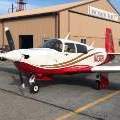Stall Warning/AOA Failure Poll
Stall Warning Failures?
23 members have voted
-
1. Have you experienced and AOA device failure (stall warning is an AOA device as well)?
-
Never15
-
One time misreading/false information0
-
Multiple times time misreading/false information3
-
Icing failure0
-
Display/buzzer failure2
-
One time total failure2
-
Multiple times total failure3
-
Failure as result of total electrical failure0
-
-
2. If you've had an AOA device failure, which type of sensor was it?
-
Classic stall warning7
-
Stall warning tab type AOA sensor1
-
Air pressure sensor0
-
Airfoil shaped probe sensor1
-
Software derived AOA0
-
Other0
-
Never failed14
-


Recommended Posts